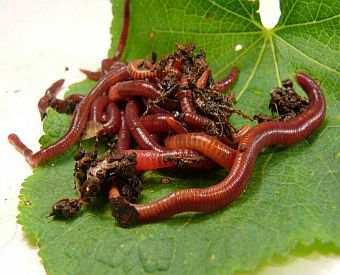The Basic Principles Of Red Wiggler Express
The Definitive Guide to Red Wiggler Express
Table of ContentsRed Wiggler Express - The FactsThe Red Wiggler Express PDFsSome Known Details About Red Wiggler Express The Buzz on Red Wiggler ExpressThe smart Trick of Red Wiggler Express That Nobody is Discussing
Some worm farmers in fact keep food and water to imitate dry spell conditions and bump up cocoon production. We don't advise this for the home composter as it has the possible to kill off also many of your finest worms. Since you understand everything about the red worm it's time to go out and locate a good vendor and obtain an extra pound or more and begin your very own worm farm.We'll speak regarding how to preserve red wigglers and why they ought to be the go-to worm for most composters. Enjoyable reality: The "fetid" component of the binomial name refers to what some claim is a smelly secretion the red wiggler makes use of to fend off killers. The composition of a red wiggler looks like that of other common earthworms; a long-segmented body starts at the sharp head and terminates at a slightly-flatted tail.
Not known Details About Red Wiggler Express
The gastrointestinal tract is easy, starting at the mouth where the worm starts to consume its food before passing it on to the pharynx. The throat is a muscle section which imitates a pump to draw food right into the mouth before pumping it out right into the esophagus. The esophagus is slim and thin-walled and acts as the "waiting area" for the gizzard.
Note: This need for grinding is why grit is suggested in a worm bin. The worm includes no native grinding capacity so the worm counts on consumed grit to assist grind its food in the gizzard. The belly is where the first chemical breakdown of food occurs with the help of a protein-busting enzyme.

Within 42 days, these infant worms will certainly reach sexual maturation as shown by the development of the clitellum. A mature red wiggler can be expected to live in between one to 3 years. The mighty red wiggler might occasionally be used as a bait worm for smaller sized fish or as a healthy protein resource for hens and reptiles.
Red Wiggler Express Things To Know Before You Buy
And as stated above, they are the most usual composting worm in the world. But why? Well there's most likely not just one factor. Rather, a mix of cost, strength, and comfort in a large range of temperatures makes it the most ideal composting worm for the majority of brand-new vermicomposters. Red wigglers and their cocoons can endure in a large range of conditions.
This is an usual method amongst worm shippers that do not want to risk having the worms being in a hot or cool warehouse over the weekend break. Worm growers are not keeping worms in a circumstance where they prepare to deliver. The worms must be gathered from their environment first, so farmers will often establish a Friday or Saturday deadline in order to harvest in time for a Monday shipment.
To save on shipping expense, you may want to see if there are any type of close-by "Mother and Pop" shops via a Google search (Worm Farms United States).
I call these the "Large 3" factors of worm container upkeep. As stated earlier, red wigglers have a broad temperature tolerance.
Not known Facts About Red Wiggler Express

For best results, you want to fire for about 60-70% moisture level. At the perfect dampness levels which is simply under 70% that handful should barely generate one decline of fluid.


The European Nightcrawler, the larger cousin of the red wiggler, is just as ravenous and likewise produces an excellent lure worm. However it likes a little bit of a cooler environment than the red wiggler. The African Nightcrawler is a huge composting worm and makes a gorgeous, granular cast.
The Indian Blue is ravenous, however also likes a warmer climate and it also shows a tendency to run away the container. The red wiggler is a hardy worm and isn't as fussy regarding its climate. I like to call it the Ford Taurus of vermicomposting worms; you won't boast to your hardcore composting buddies that you possess them, but they will certainly serve you well.
The Single Strategy To Use For Red Wiggler Express
Surefire to life 1/2 pound of hand sorted Red Wigglers/Compost with worms (+500 worms) in different phases of life from cocoons to mature worms in their natural environment/bedding. Hand arranged worms minimized the disruption of the worms thus insuring online distribution. Red wiggler worms do not like vibrations or light.